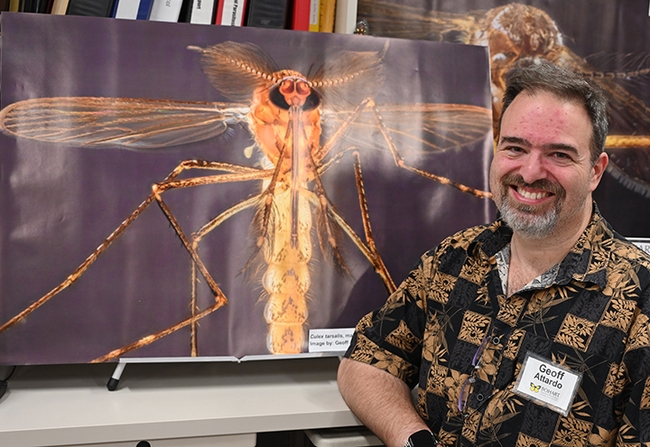- Author: Kathy Keatley Garvey
247 years!
The seven faculty members honored at the UC Davis Department of Entomology and Nematology's recent retirement luncheon amassed an amazing 247 years of service:
- UC Davis distinguished professor James Carey, 44 years, faculty member since 1980. He retired in June.
- UC Davis distinguished professor Richard Karban, 42 years, faculty member since 1982. He retired in June.
- UC Davis distinguished professor emerita Lynn Kimsey, 35 years, faculty member since 1989. She retired Feb. 1, 2024.
- Robert Kimsey, adjunct professor, 35 years, faculty member since 1989. He retired in June
- UC Davis distinguished professor Jay Rosenheim, 34 years, faculty member since 1990. He retired in June.
- UC Davis distinguished professor Diane Ullman, 29 years, faculty member since 1995. She retired in June.
- Sharon Lawler, professor emerita, 28 years, faculty member since 1995. She retired in January 2023.
Read about them on our UC Davis Entomology and Nematology website, with links to individual stories. You may have interacted with one or more of them through their research, teaching or public service.
As molecular geneticist and physiologist Joanna Chiu, professor and chair of the department, said prior to the retirement luncheon: “Our retiring faculty will leave behind some very big shoes to fill. “They have set the bar very high for all of us with their passion to lifelong scientific exploration, perseverance to achieve intellectual and mentoring excellence, and dedication to the department, UC Davis, and external stakeholders. We are so proud to call them colleagues and mentors and they will no doubt continue to inspire us to carry on their legacy. It is with our most sincere appreciation that we wish all of them the best in their new endeavors and adventures in this next chapter of their lives."
247 years of service!
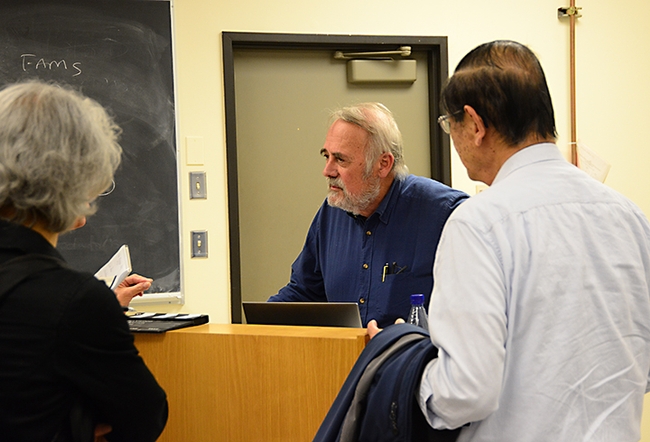
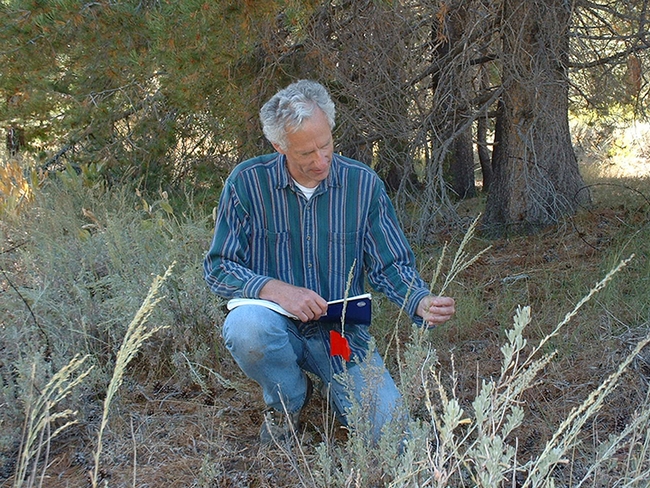
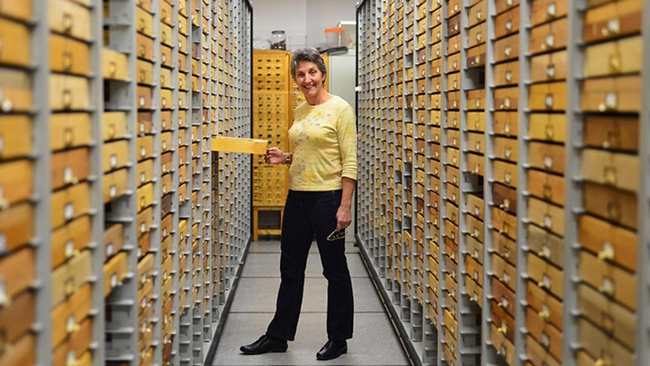
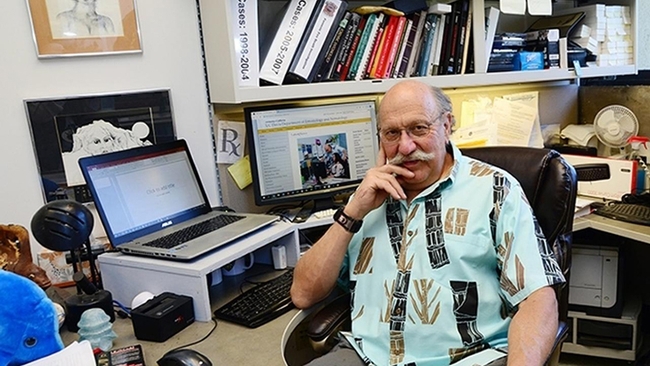
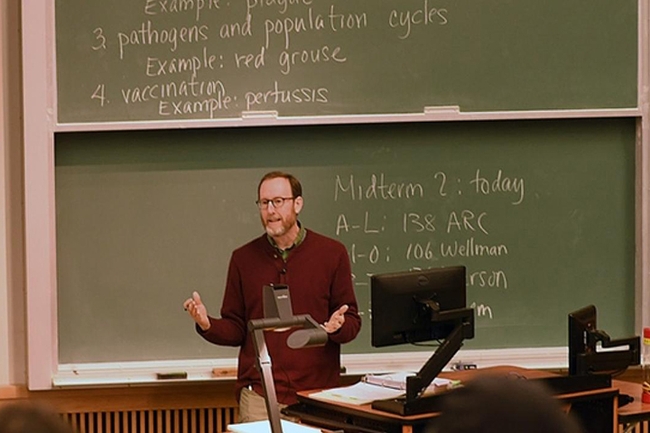
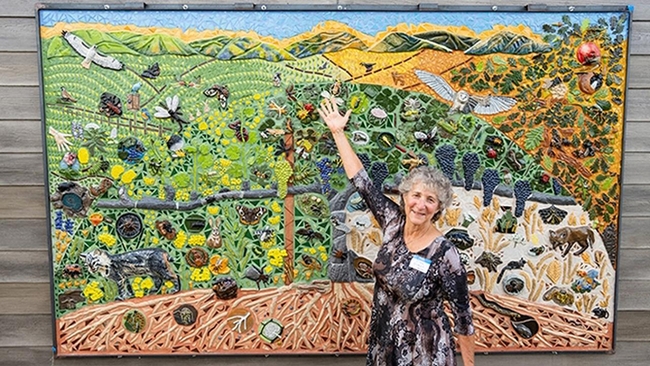
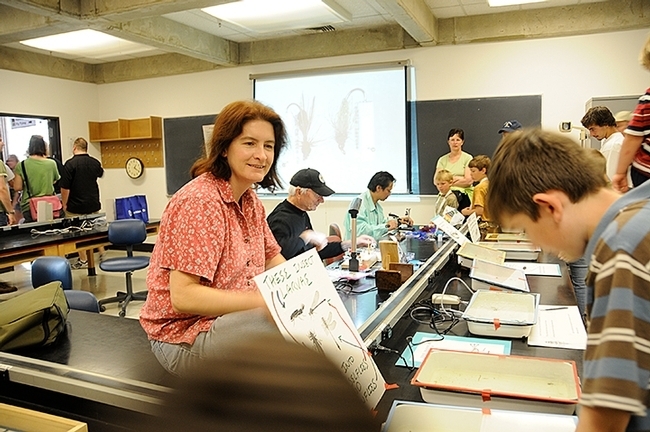
- Author: Kathy Keatley Garvey

Ricardo Vela, manager of UC ANR News and Information Outreach in Spanish (NOS), won the ACE 2024 Rising Star Award, an annual award that "honors communicators, instructors and researchers who demonstrate exceptional leadership and technical skills in their communication field, to their institution, and service to ACE."
Five other UC ANR communicators won either a gold (first place), silver (second place), or a bronze (third place) award.
- A trio from UC ANR Strategic Communications--Michael Hsu, senior public information representative; Ethan Ireland, senior videographer; and Evett Kilmartin, photographer--teamed to win a silver award for their video, “Farm-to-Corrections Project."
- Strategic Communications' social media strategist Doralicia Garay won a bronze award for her entry, “Improving Lives in California” in the category, social media organic campaign.
- Kathy Keatley Garvey, communications specialist for the UC Davis Department of Entomology and Nematology and author of the Bug Squad blog on the UC ANR site, won a gold award for “best feature photo."
They will receive their awards at the ACE conference, scheduled June 23-25 in Salt Lake City Utah. The theme: “Big Ideas Start Here.”
Ricardo Vela
Ricardo Vela is a 35-year, two-time Emmy-winning broadcast journalism professional, as noted on the ACE site. As program manager of NOS, he supervises a Spanish-language expert team that disseminates news and research about agriculture, nutrition, and natural resources to Spanish-speaking communities across California. Vela is “an advocate for Latino and other ethnic groups, promoting their contributions to society and creating for the first time, events for the UC ANR community to celebrate Hispanic Heritage Month and Cesar Chavez Day.”
Before joining UC ANR, Vela worked as a national news correspondent for Univision and CNN in Texas and Los Angeles. He started his journalism career at the Chicago Tribune and Univision in Chicago, Ill. While in Chicago, he collaborated with several Latino community organizations, always promoting equity and inclusion. He served as Univision's main news anchor in San Diego for 17 years and hosted a morning talk radio show,“Voces Hispanas,” for 10 years. His career includes serving as news director and anchor at Entravisión (a Univisión affiliate) in Palm Springs and as a news anchor at Telemundo in El Paso, Texas. In 2006, Hispanic Magazine listed him as among the 100 most influential Latinos in the country.
UC ANR Vice President Glenda Humiston appointed Vela as a founding member of the UC Diversity, Equity, and Inclusion Committee to serve a three-year term.
The ACE Rising Star Award memorializes Frank Jeter (1891-1955), a pioneering ACE member from North Carolina who made significant contributions to the communication field and to ACE.
Michael Hsu, Ethan Ireland and Evett Kilmartin
The Hsu-Ireland-Kilmartin team produced a video featuring UC ANR's Nutrition Policy Institute (NPI) and its unique partnership with Impact Justice, ChangeLab Solutions, Spork, and the California Department of Corrections and Rehabilitation (CDRC). Last July they launched the "Farm-to-Corrections Harvest of the Month" project, which brings fresh, specialty produce into California prisons “to improve the diets of the residents, as well as improve their overall health and well-being.” Impact Justice is a prison reform organization, ChangeLab Solutions is a health equity nonprofit, and Spork is a regional food hub.
The video, Hsu said, aims to raise awareness and build support for the project. He cited its many wins:
- Opens major untapped market for California growers and producers (especially small farmers)
- Demonstrates a way for CDCR to meet requirements for in-state sourcing of food
- Provides healthier food for residents of the correctional facilities, while introducing new produce and nutrition education opportunities that can help them live better lives while they are in prison and after they return to their communities.
Hsu conducted the interviews and wrote the script; Ireland shot and edited the video; and Kilmartin contributed photos. Some images were taken in the California Department of Corrections, California State Prison, Solano (Vacaville). (See the news story, "Farm-to-Corrections' Project Provides Fresh Produce to People in Prison, Boosts California Growers.")
Doralicia Garay
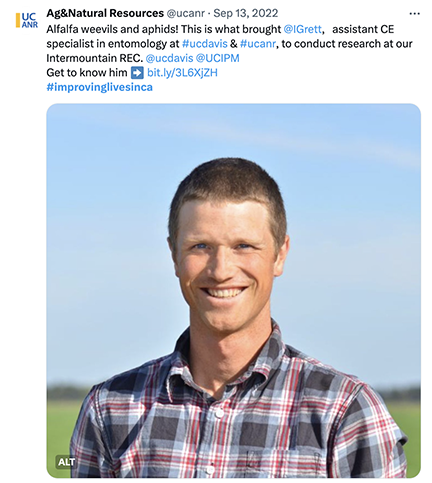
"The campaign's strategic emphasis on showcasing employees within the narrative of research efforts enhances the UC ANR brand identity and positions the organization as a collaborative pioneer in innovation," Garay wrote. "This comprehensive approach leverages the power of social media to extend reach, foster engagement, and effectively cater to our online community."
Among those featured in "Improving Lives in California:" entomologist Ian Grettenberger, assistant professor of Cooperative Extension, and a member of the faculty of the UC Davis Department of Entomology and Nematology.
Kathy Keatley Garvey
Kathy Keatley Garvey, a journalist formerly with UC ANR before joining the UC Davis Department of Entomology and Nematology, submitted an image of a honey bee buzzing over a zinnia. Her entry, “Celebrating the Honey Bee," won the feature photo category, for "one image that effectively tells a story."
"The purpose of this photo was to celebrate the honey bee by capturing an image of a pollen-packing worker bee in flight over a bright flower," wrote Garvey. Her gear: a Nikon D500 with a 105mm lens. Settings: 1/4000 of a second (to freeze the action), ISO 1000, and f-stop 6.3. She sought to showcase "the amazing color: the bright red zinnia and the orange pollen;" the bee's speed (deliberately blurring the wings); and "to emphasize that foraging honey bees are incredible workers."
"That is one huge ball of pollen that she'll take back to her colony," Garvey wrote. Feedspot, which ranks blogs by traffic, social media followers and freshness, ranks her Bug Squad blog as the No. 4 bug blog in the world, Garvey has written the blog every night, Monday through Friday, since Aug. 6, 2008.
Communication Professionals
ACE, headquartered in Morton Grove, Ill., describes it members as "communication faculty and professionals at public and land-grant universities throughout the United States and in similar institutions in other nations.We are communication professionals at local, state and federal agencies; corporations and nonprofit organizations; and agriculture- and natural resources-focused international research centers."
Its members include "writers, editors, graphic designers, webmasters, video producers, information technologists, photographers, administrators, researchers, faculty members and others in the communications field. We plan, prepare and disseminate research results and Extension educational materials. We distribute research-based information to scientists and technicians, and practical, problem-solving information to people who put it to work: farmers, families, foresters, food processors, ranchers, homemakers, news media, youth, marine businesses, businesses and many others."
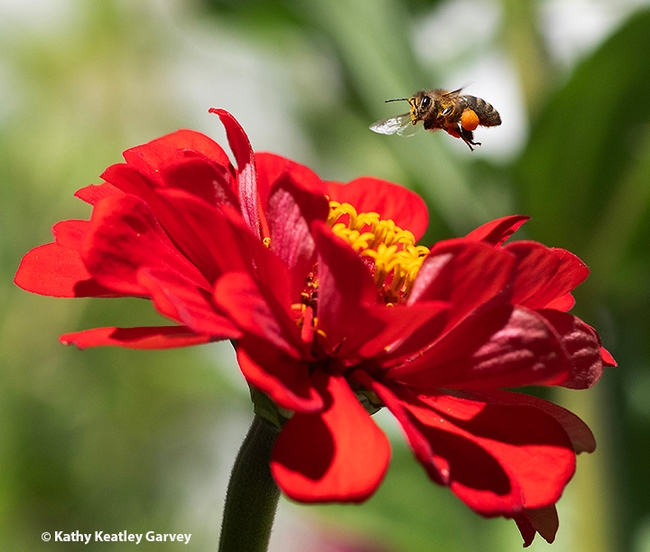
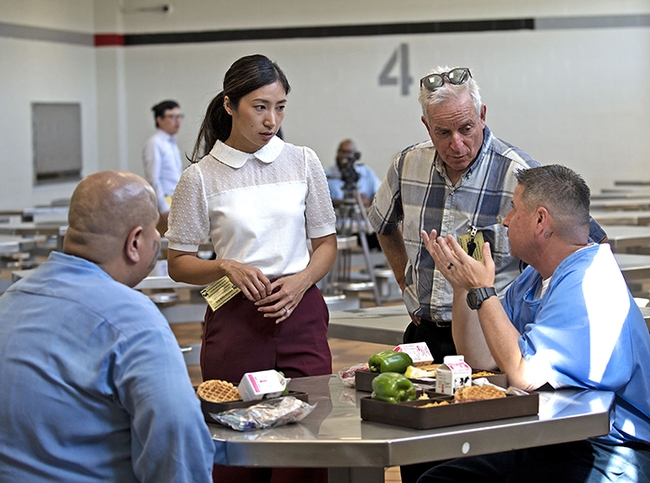
- Author: Kathy Keatley Garvey
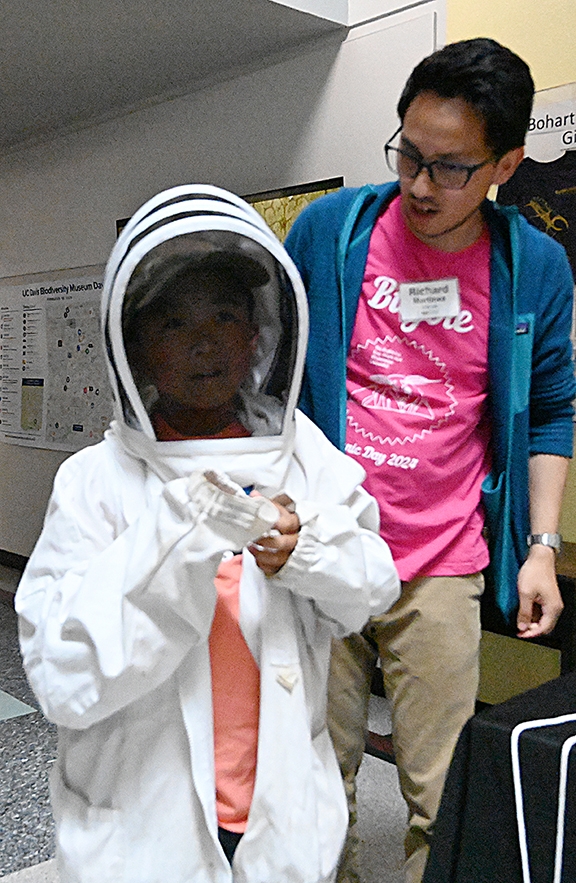
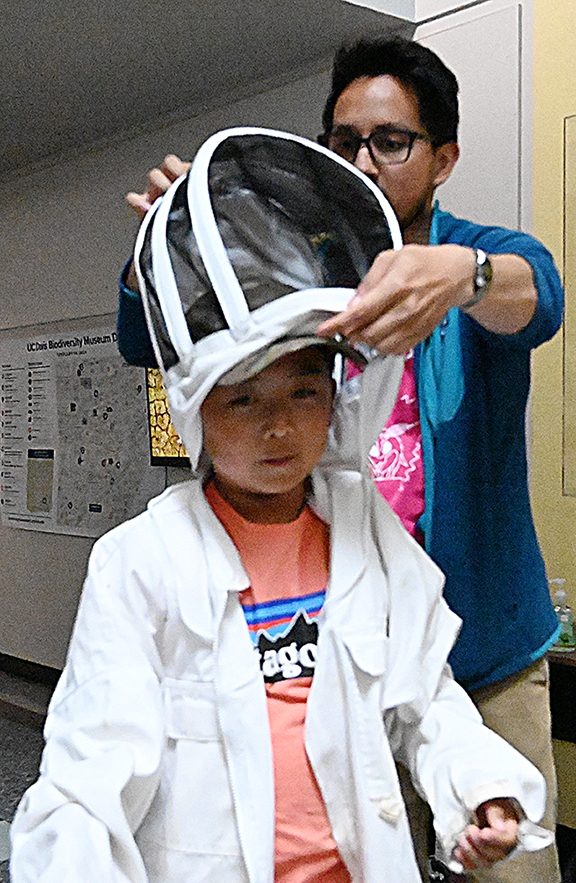
That was the consensus at the Bohart Museum of Entomology open house when attendees tried to locate the queen in the bee observation hive at a table staffed by UC Davis graduate student Richard Martinez of the Elina Lastro Niño lab, Department of Entomology and Nematology.
Martinez purposefully didn't mark the queen.
"Most kids thought the queen was going to be marked--common beekeeping practice--but mine wasn't, so they thought that was unfair," Martinez quipped. "Only one kid was able to find the queen. And it was toward the end of the event. The queen was laying an egg when we found her."
The drones, the males, also drew avid interest.
"After I mentioned the hive has drones, what i referred to as 'the boys'--it helps kids understand their role in the hive--they were fascinated with finding the drones, which they did."
Most kids, however, confused drones for the queen, Martinez said.
Attendees, both adults and youth, delighted in trying on the beekeeper veils and suits, and examining the hive tools and other apiary equipment.
"A lot of the kids asked what bees do inside the hive," Martinez said. "So I went through my list of roles honey bees carry out. One family was super invested in the science behind honey bee research, particularly nutrition, which is what I study."
"It was a pretty fun event," he said.
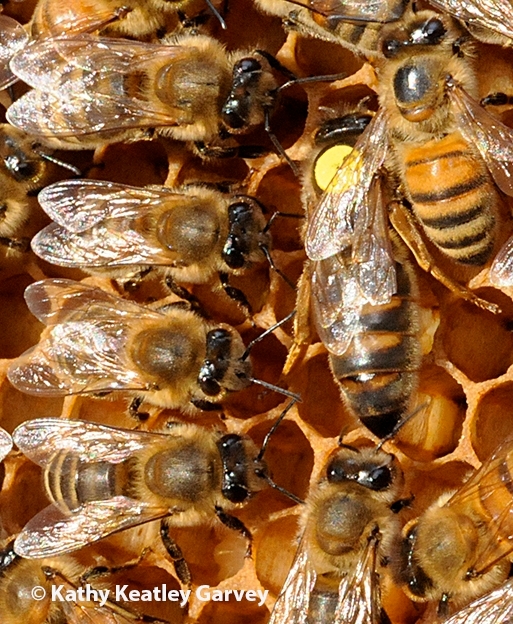
The queen bee, the largest bee in the colony, has a long, narrow, pointed abdomen, and shorter wings than the worker bee. The worker has a rounded abdomen and wings that extend almost to the end of the abdomen. The drone, stout in body, has what some call "wrap around eyes."
The Bohart Museum open house, held May 19 not only featured honey bees (managed bees) but wild bees. (More images pending)
Martinez, a master's student, studies honey bee health, specializing in nutrition, in the lab of E. L. Niño, associate professor of Cooperative Extension, and a member of the UC Davis Department of Entomology and Nematology faculty.
Martinez recently helped staffed the UC Davis Entomology Graduate Student Association (EGSA) t-shirt booth at Briggs Hall during the 110th annual UC Davis Picnic Day, where he and fellow graduate students wore "Bugbie" shirts. The t-shirt, designed by Marielle Hansel Friedman, a second-year doctoral student in the lab of urban landscape entomologist Emily Meineke, features a rosy maple moth, Dryocampa rubicunda. (EGSA offers a variety of t-shirts on its sales website at https://ucdavisentgrad.square.site/.)
The Bohart Museum, located in Room 1124 of the Academic Surge Building, 455 Crocker Lane, UC Davis, houses a global collection of eight million insects, plus a live petting zoo, and a gift shop. Professor Jason Bond, the Evert and Marion Schlinger Endowed Chair of the Department of Entomology and Nematology, and the associate dean, UC Davis College of Agricultural and Environmental Sciences, directs the museum. He also serves as president-elect of the American Arachnological Society.
The next open houses are set for
- Saturday, July 20: "Moth Night at the Museum," 7 p.m. to 11 p.m.
- Saturday, Sept. 28: "Museum ABCs: Arthropods Bohart, and Collecting," 1 to 4:30 p.m.
All open houses are free and family friendly; parking is also free on weekends.
Summer public walk-in hours are on Tuesdays, June 17-Aug. 27 from 9 a.m. to noon, and from 1 to 4 p.m. The museum will be closed to the general public from Sept. 1-22.
For more information, access the website at https://bohart.ucdavis.edu or contact bmuseum@ucdavis.edu.
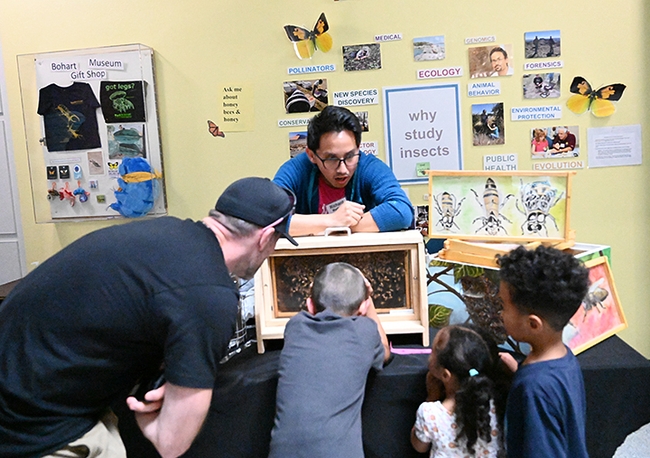
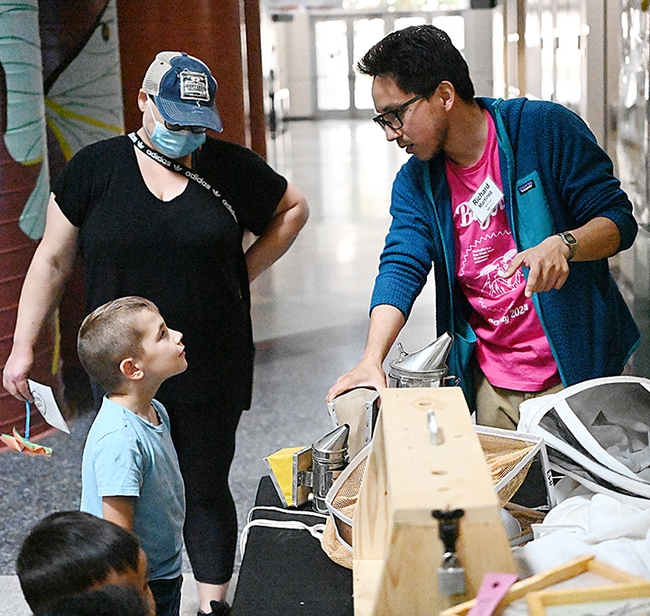
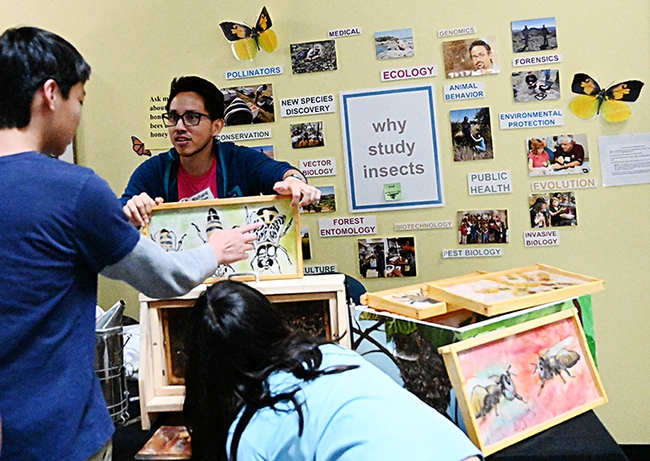
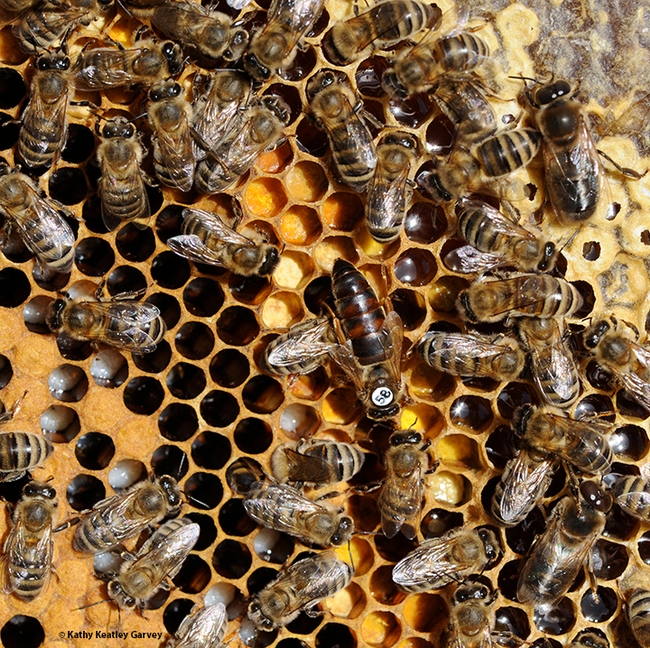
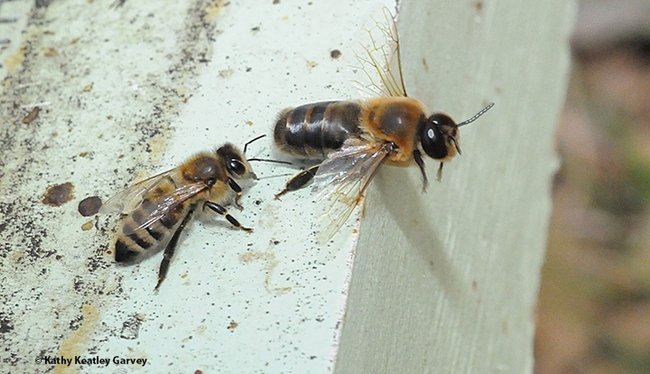
- Author: Kathy Keatley Garvey

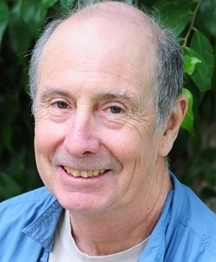
If you're a member of the Hammock lab, you're family.
So it was no surprise--no surprise at all--when Jean-Pierre Delplanque, Vice Provost and Dean of Graduate Studies announced that Hammock is a recipient of a 2024 Graduate Studies Distinguished Graduate and Postdoctoral Mentoring Award.
“Your dedication to mentoring is truly commendable, and this recognition is well-deserved,” he told Hammock in an email.
The annual award recognizes “the vital role mentoring plays in the academic and professional development of graduate students and postdoctoral scholars at UC Davis.” The professor will receive a certificate and a $1,000 education enrichment award.
Hammock, who holds a joint appointment with the Department of Entomology and Nematology and the UC Davis Comprehensive Center, “is an incredible mentor, legendary scientist, highly supportive colleague, and a great friend,” wrote nominator and former Hammock lab member Guodong Zhang, now an assistant professor in the UC Davis Department of Nutrition. “He richly deserves this prestigious award.”

Zhang described the Hammock lab as a “highly multidisciplinary, with members having scientific backgrounds in nutrition, pharmacology, analytical chemistry, cancer, pain, and environmental toxicology. From these extensive interactions within and outside of the research group, I have learned how to conduct scientific collaborations."
“The 3-year postdoc training in the Hammock lab stands out as one of the most rewarding periods in my research journey,” Zhang related. “In my moments of experimental setbacks, Bruce was a constant source of encouragement, guiding me on extracting valuable insights from negative data. Conversely, when experiments yielded positive results, he offered insightful advice and introduced me to other labs at UC Davis, thus broadening the scope of our research projects. Bruce was most excited about the ‘unexpected data' because of his belief that such anomalies often herald new scientific discoveries. And he always encouraged us to perform experiments to disprove his favorite hypotheses, fostering a positive and nurturing research environment.”
In his letter of nomination, Zhang shared comments by four other Hammock lab alumni: Kin Sing Stephen Lee, now an assistant professor, Department of Chemistry, Michigan State University; Yuxin Wang, lead computational biologist and manager of the Stephen Lindemann lab, Purdue University; Weicang Wang, assistant professor, Department of Food Science, Purdue University, and Susanne Mumby, retired assistant dean for postdoctoral affairs at the University of Texas Southwestern Medical Center. (Read the comments here)
'If Science Is Not Fun, It Shouldn't Be Done!'
We remember when Marlin Rice, a past president of the Entomological Society of America (ESA) chronicled Hammock in a 2020 Legends feature in the ESA's American Entomologist and asked what he looks for in researchers seeking to join his lab. "Curiosity," Hammock replied. "And then there's this: If science is not fun, then it shouldn't be done. And if they enjoy science, then they probably will be successful."
A member of the UC Davis faculty since 1980, Hammock is known for his expertise in chemistry, toxicology, biochemistry, entomology and human health research. His work in enzyme research alone spans more than 50 years. He co-discovered a human enzyme termed Soluble Epoxide Hydrolase (sEH), a key regulatory enzyme involved in the metabolism of fatty acids. The enzyme regulates a new class of natural chemical mediators, which in turn regulates inflammation, blood pressure and pain, and is in human clinical trials to replace opioid analgesics.
As director of the UC Davis Superfund Research Program (funded by the National Institutes of Health's National Institute of Environmental Health Sciences) for nearly four decades, Hammock supported scores of pre- and postdoctoral scholars in interdisciplinary research in five different colleges and graduate groups on campus. campus. He ran a pre- and postdoctoral training grant associated with this program and in addition for 15 years was principal investigator of a NIH training grant in the UC Davis Biotechnology Program.
Hammock is an internationally celebrated scientist. He is a fellow of the National Academy of Inventors, the National Academy of Sciences, the California Academy of Sciences, and ESA. At UC Davis, he received both the Academic Senate's Distinguished Teaching Award and the Faculty Research Lectureship. In 2020, UC Davis Chancellor Gary May awarded him the first-ever Lifetime Achievement Award.
His story, however, begins in Arkansas.
A native of Little Rock, Ark., Bruce received his bachelor's degree in entomology (with minors in zoology and chemistry) magna cum laude from Louisiana State University, Baton Rouge, in 1969. He received his doctorate in entomology-toxicology from UC Berkeley in 1973 with John Casida at UC Berkeley. Hammock served as a public health medical officer with the U.S. Army Academy of Health Science, San Antonio, and as a postdoctoral fellow at the Rockefeller Foundation, Department of Biology, Northwestern University, Evanston, Ill.
In the Army, he served as a medical officer at Fort Sam, Houston, and what he saw--severely burned people in terrible pain--made a lasting impression on him. Today he's deeply involved in his research at UC Davis and the company he founded, EicOsis, in 2011 to alleviate pain in humans and companion animals.
And today, UC Davis distinguished professor Bruce Hammock is a newly announced recipient of a 2024 Graduate Studies Distinguished Graduate and Postdoctoral Mentoring Award. Not only highly commendable, but so well-deserved!


- Author: Kathy Keatley Garvey
Being bothered by mosquitoes and troubled about the risk of diseases?
Mosquitoes are not just annoying. They can be deadly.
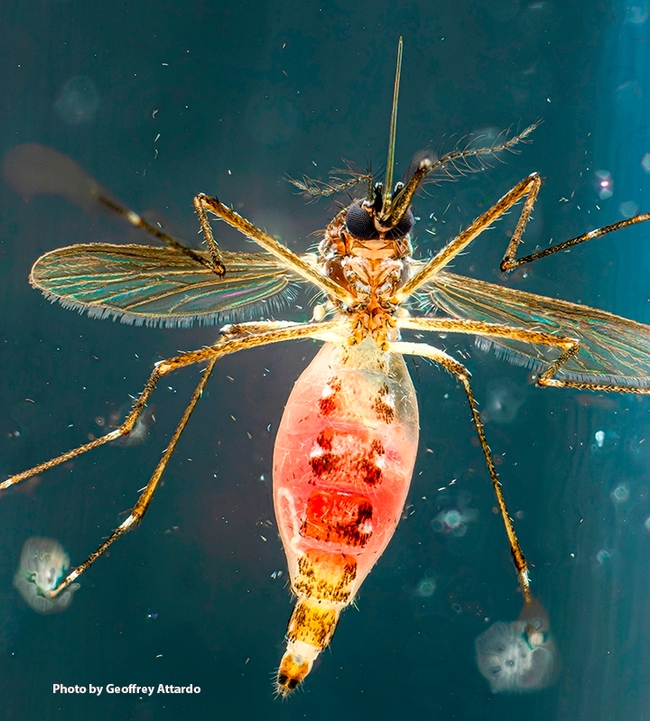
The seminar, titled "Natural Mosquito Control," is part of the California Farm Academy Speaker Series, and will take place from 4:30 to 7:30 p.m. at CLBL, located at 40140 Best Ranch Road, Woodland. The event begins with pizza and mingling, “until about 5:30, and then the presentation,” said spokesperson Julia Hobbs Thomas. Reservations can be made on Eventbrite.com at this link.
The event is billed as "a discussion about both native and invasive species, what diseases they can spread, and how healthy ecosystems can create habitats that keep them in check. Agriculture can play a big role, because pesticide use can damage populations of beneficial insects like dragonflies. You'll also pick up a few tips to avoid being bitten!"
Wood-fired pizza and beverages will served beneath the canopy of a century-old valley oak, she added. Attendees can also bring food or beverages to enjoy or share.
Said Attardo: “I will be focusing on educating people about the most imminent risks of mosquito-borne diseases in California coming from West Nile Virus—due to native Culex mosquitoes predominantly—and Aedes aegypti vectored diseases such as dengue, Zika, Chikungunya, and yellow fever. I'll discuss places these mosquitoes breed in suburban and urban habitats, as well as ways people can eliminate and prevent creation of breeding sites.“
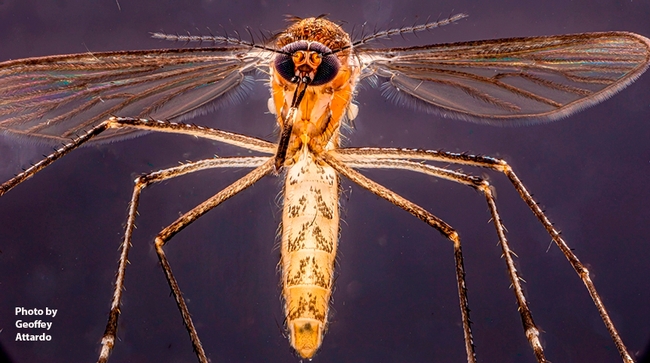
Attardo specializes in medical entomology, reproductive physiology, molecular biology and genetics. He recently hosted a UC Davis symposium, sponsored by the Deaprtment of Entomology and Nematology and the Pacific Southwest Center of Excellence in Vector-Borne Diseases, on “Tule and Cattail: A Tale of the Marsh Economy and Its Role in Human Health and Wellbeing” that aimed "to advance the land management aims of local tribal communities and provide a platform to educate about the importance of maintaining wetland biology for climate change, ecological and human health, and vector control." Attardo addressed the symposium with collaborator Diana Almendariz, a traditional ecological knowledge specialist and a cultural practitioner of Maidu/Wintun, Hupa/Yurok traditions, heritage, and experiences.
A global expert on vectorborne diseases, and renowned for his groundbreaking work on tsetse flies, Attardo received the Medical, Urban, and Veterinary Entomology Award in 2022 from the Pacific Branch, Entomological Society of America. (See news story)
He joined the UC Davis Department of Entomology and Nematology in 2017 from the Yale School of Public Health, where he served as a research scientist studying the reproductive biology of tsetse flies. Attardo holds a doctorate in genetics (2004) from Michigan State University, studying with Alexander Raikhel.
For more information on the May 15 seminar, contact Thomas at julia@landbasedlearning.org or 415-271-0090.
